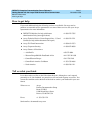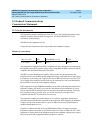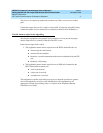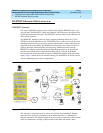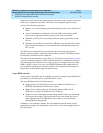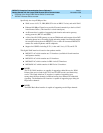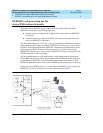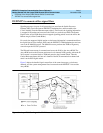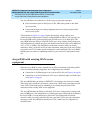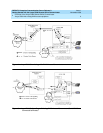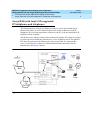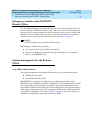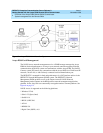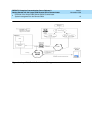
DEFINITY Enterprise Communication Server Release 9
Getting Started with the Avaya R300 Remote Office Communicator
Issue 1
November 2000
Overview of the Avaya R300 Remote Office Communicator
5DEFINITY call processing for the Avaya R300 stations & trunks
1
DEFINITY call processing for the
Avaya R300 stations & trunks
The trunk facilities within the Avaya R300 are under the management of the main
DEFINITY switch. The Avaya R300 operates as a:
■ Line-side gateway to represent the 24 digital and 2 analog stations to DEFINITY
as IP phones.
■ Trunk-side gateway to represent the PSTN wide area network digital and analog
services to DEFINITY as IP trunks.
The Avaya R300 operates as a “line side” gateway to translate the TDM-based digital and
analog telephone stations and present them to DEFINITY as if they were “native” H.323
IP phones. It should be noted that the DEFINITY maintenance and administration of the
lamp displays and button control are maintained exactly in accordance with existing
DEFINITY CCMS messages. These “custom” DEFINITY messages are tunneled over the
TCP/IP connections to the Avaya R300.
The Avaya R300 operates as an IP trunk gateway for the management of digital trunks
(T1/E1, BRI) and the analog trunks. Each element of the PSTN trunks can be mapped to
be represented to DEFINITY as an IP Signalling group member. This allows all of the
DEFINITY application features such as ARS and Multi-Location Routing to be employed.
In effect, the Avaya R300 operates as a “virtual” EPN to DEFINITY. Figure 2 shows how
DEFINITY call processing views the resources within the Remote Office.
Figure 2. DEFINITY Call Processing for Remote Stations and Trunks



